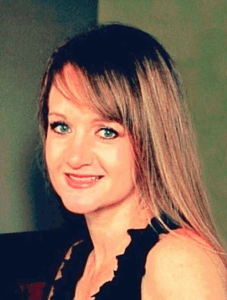 Written by Katinka van der Merwe
Written by Katinka van der Merwe
Dr. Katinka is back to write about the anatomy of hope. What does she mean by this? How can a chiropractor impact lives of people living with CRPS/RSD? After finding her purpose, Dr. Katinka did just that. From neuromuscular reeducation to microcurrents, read all about it here.
Six years ago, I was a chiropractor bored to death in practice. The public viewed me much the same as they view all chiropractors. I probably “cracked” backs and necks. That is what chiropractors do, right? I reached out for help in any way I could think. I attended seminars, I visited successful and happy chiropractors, I read motivational things. Everywhere I looked I was told to “find my purpose”, but that was easier said than done. I was struggling to find my purpose. Does one simply declare one’s desire to find such and it magically comes?
Today, six years later, and finally having found my purpose, I still cannot not provide a clear answer to this question if my life depended on it. I guess the answer lies somewhere in between. I remained open. I remained thirsty. I always looked. Fate maybe played a hand. I never take it for granted, this purpose. As a trained chiropractor and the daughter of a chiropractor, I was raised with the strong philosophy that the body can heal from within in most circumstances, given the right support. I was raised with the knowledge that the nervous system is magically intelligent and the agent of this healing process. I knew there was a whole community that believed that when serious health problems present themselves, you better make your way to a “real” doctor and get yourself some proper care.
However, I always believed. I believed that this philosophy made sense for everybody, even the worst of the worst– even for those who suffer from CRPS. I only had to find the right tools. My life changed one day when a full body CRPS patient named Carlos came to me for help. He was burning from within, he was sustaining on liquids, curling up in pain after eating anything. His wife told me he no longer wanted to live. He told me that he did not believe I could help him. I was scared, feeling the pressure of a life in balance upon my shoulders. I treated him with the only tool I had at that time that I believed would help. I treated his Vagus nerve. It worked. That day, not only Carlos was saved, but I was too. I had found my purpose.
I will explain my system in this blog. I have before, but my work is constantly evolving and changing, as any doctor worth his or her salt work should be. A good doctor believes in your ability to heal, a good doctor believes in YOU. A good doctor is always open to new knowledge. Since the last time I wrote for this blog, I have stopped using at least one therapy, and added a few new things. I have added purpose- driven talented people to my team. The message that I want to give all people in daily chronic pain is not to simply hope for a cure, but to find hope again. This process starts by gaining trust in your body’s ability to heal from within. Your body is infinitely smart. Every second, regardless of how sick you are, your body is performing roughly 38 thousand trillion functions. It does all this without your input, without your doctor’s help. It is true that your body may become stuck. Sometimes it may need some help to get back on track. In our world, we call this nerve interference.
Before I explain my system, it is important to remember that not every treatment works for every patient. It is also important to know that as a chiropractor, I am not allowed to make claims of treating any specific condition. What I do is to remove nerve interference. My system was put together laboriously over the last six years, piece by piece. If we do not see predictably high success rates, we change it, and we fine-tune it.
Six years ago, I set out on an ongoing journey to treat the central nervous system of those patients who often suffer from some of the most painful and hopeless conditions from all over the world. In order to treat these patients effectively, I needed revolutionary tools in my figurative tool bag. I always say that some of my best virtues are an open mind and a never ending thirst for new knowledge. I am obsessed with helping more people more effectively.
Whenever I hear of an amazing technique, system, supplement or technology that helps the very worst patients, I set out to investigate it and when appropriate, I bring it home to our clinic. My number one criteria is that whatever is used must either remove nerve interference and/or help the body to function better from the inside out, the way it was designed to do. It should NOT merely cover nor suppress pain. It is my belief that no long term good can come from either. Pain is merely your body’s way of crying out for help.
By following this formula, I have put together a powerful system consisting of several “punches”, as described below. After all, nearly every patient entering our system is involved in the fight of their life. They are fighting not only to regain their health, but they are also fighting to return fully to life.
It is our philosophy that the location of your symptoms (most often pain) does not necessarily directly correlate to the cause of your symptoms. One dysfunctioning part of your body may adversely affect a completely different part. Medically, the body part or area that is symptomatic will be examined in detail through methods such as X-ray and MRIs, but the whole body is often ignored.
Every part of the body affects every other part, and each of our punches has a holistic approach.
OUR “SEVEN PUNCH” SYSTEM
WAKING UP THE VAGUS NERVE
The Vagus nerve is one of the twelve cranial nerves exiting the brain, bypassing the brain and supplying the body. This nerve is part of your autonomic (or automatic) nervous system and is crucial to your health, as it serves many valuable functions, such as digestion and helping you to swallow. In recent years, lots of research has been done about this nerve and its effect on the central nervous system, inflammation, and the immune system. It is now believed that this nerve acts more like a secondary spinal cord than an individual nerve. This nerve is parasympathetic in nature, and communicates with most of the organs in both the chest and abdominal cavities. When people suffer from chronic pain, they often suffer from malfunction of this nerve, also commonly referred to as “low tone” of the nerve.
I have studied and combined several techniques from all over the world, all focused on increasing the function of this nerve. Since this nerve is located near the top vertebra in the spine (the atlas), gentle and specific pressure to the upper cervical spine will often help this nerve to start functioning the way it was designed to do again. If your problem will respond to Vagus nerve stimulation, your Neurologic pain will often decrease early on in treatment, even if for short periods of time after treatment in the first phase of our system.
NEUROMUSCULAR REEDUCATION
Neuromuscular reeducation is the latest addition or “punch” to our system, and we are really excited to offer it. It is a new frontier in rehabilitation and it affects both the nervous system as well as the muscles, tendons and ligaments. This system is a form of electrotherapy and uses specialized equipment that the patient is hooked up to while performing a specific set of therapeutic exercises under the watchful eye of one of our experienced neuromuscular reeducation therapists. Before the therapy begins in earnest, your therapist will perform what we refer to as several “search and destroy” sessions.
During these sessions, the therapist will use electric pads to search for “hot spots”, or areas where sodium, potassium and calcium are leaking from the nerve cells. Often, these “hot spots” may not be in the area where most of your symptoms are. Remember, every part of your body is connected with every other part.
Neuromuscular reeducation helps the body to correctly absorb stress and also will quickly accelerate muscle rehabilitation and strength. Our patients often report that they are seeing gains with this therapy not seen before even after years of physical therapy. The reason for this is that while hooked up to this machine your muscles will gain strength at a very accelerated pace, as one rep is roughly equal to about 250 reps performed during regular PT or exercise.
Therefore, it is common to see tremendous breakthroughs in a handful of sessions on a body part that has gone through repeated physical therapy for many years.
Neuromuscular reeducation is hard work and can be intense, but our patients truly love this specific punch. It is very rewarding, after years of not being able to use a specific body part (or parts), to see function and strength return to that body part(s). Strength equips freedom.
This system has been FDA approved specifically for:
1. Relaxation of muscle spasms;
2. Prevention or retardation of disuse atrophy;
3. Increasing local blood circulation;
4. Muscle re-education;
5. Immediate post-surgical stimulation of calf muscles to prevent venous thrombosis;
6. Maintaining or increasing range of motion.
FREQUENCY SPECIFIC MICROCURRENT
Frequency Specific Microcurrent is another treatment using electrotherapy and an exciting new way of treating nerve and muscle pain and many other conditions using specific frequencies and microamperage current. Most people suffering from chronic pain also suffer from nerve inflammation and general inflammation. Frequency Specific Microcurrent decrease has been shown to powerfully decrease inflammatory cytokines and nerve pain to reduce inflammation. Cytokines are tiny proteins acting like messengers, telling the nerves to be inflamed, which in turn causes even more cytokines to be released by the body. This phenomenon is referred to as a “cytokine storm” and in a nutshell, causes a lot of pain and means big trouble for the person whose body it’s taking place in.
Frequency Specific Microcurrent has been shown to reduce inflammation in a blinded animal study more effectively than any drug ever tested in this animal model. The frequency specific effect is remarkable and reproducible.
It is important to note that there are FDA restrictions on what we can say, report or claim as an effect of the use of microcurrent as a device for the treatment of any condition other than a general “treatment of pain” statement.
Microcurrent instruments are all approved under the general class of transcutaneous electrical nerve stimulators (“TENS”) devices even though microcurrent is 1000 times less current than TENS and therefore has distinct differences that set it apart from TENS.
TENS devices can only make claims about general relief of pain. This doesn’t change what we can do, it changes what we can say about what we can do. All references to clinical effects other than simple pain control refer to frequency resonance effects not the effects of microcurrent.
FSM has changed what is possible in pain management. FSM can treat chronic myofascial pain quickly, easily, and comfortably. Nerve pain from nerve traction injuries, disc bulges, herniations, herpes and shingles can be treated successfully by FSM Practitioners.
There are protocols for kidney stone pain, disc and facet joint generated pain that give rapid and often lasting relief. The protocol for fibromyalgia associated with neck trauma offers pain relief, unprecedented changes in inflammatory cytokines and hope for the 2 million patients who suffer from this condition. People who suffer from conditions such as Complex Regional Pain Syndrome (CRPS) are also affected by circulation of high levels of inflammatory cytokines, as mentioned above.
There are never any promises with medical procedures, but Frequency Specific Microcurrent offers hope.
NERVOUS SYSTEM REHABILITATION
Once the patient’s nervous system is strong enough and their pain reduced sufficiently, we use gentle techniques to show the brain that it is responding abnormally to sensory stimuli. We also will make sure that all parts of the nervous system are freely communicating with all body parts. Think of your brain as the captain of a very large modern ship. When the ship hits a rock or an iceberg, that compartment in the hull will be automatically sealed off so that when it fills with water, the damage will not bring the entire ship down. Failure to do so will cause a catastrophe (we all know what happened to the Titanic). Much like a ship, the brain treats a chronic injury that will not heal as an energy leak adversely affecting the whole body. After a while, it will start ignoring it. This is not conducive to healing, although it is a natural protective mechanism. After the patient’s nervous system starts to heal, we gently remind the brain that that specific body part(s) need(s) help. We have found that this type of nervous system rehabilitation greatly increases the stress that the nervous system is able to handle. It is important that the patient’s body can appropriately respond to stress, as we are exposed to stress every second of the day. Stress is defined as any change. Changes in temperature, touch, humidity, etc.– all forms of stress. If your nervous system cannot adequately respond to stress, life becomes extremely difficult and painful to navigate. It is our job to help your nervous system to handle change.
DETOXIFICATION
Our patients often come to us after years of taking heavy duty medications. In our experience, Ketamine especially may interfere with your body’s ability to heal. We use gentle Detoxification techniques to assist the liver in recovering. We may also recommend heavy metal Detoxification.
FUNCTIONAL BLOOD PANEL ANALYSIS
We are finding that very often, patients who suffer from nervous system dysfunction also suffer from chronic viral and/or bacterial infections. Often, the condition started after an infection. The tell-tale “fingerprints” of these infections can be found in basic lab work, performed in our own in- office laboratory. Your results will be analyzed with an eagle eye and if we suspect chronic infections, further investigation will be done. We offer various protocols depending on the infection(s) you suffer from.
SUPPLEMENTATION BASED ON YOUR UNIQUE DNA
You may suffer from genetic variations that must be addressed through targeted supplementation. All of our supplementation recommendations will be based on your own unique DNA.
That is our system. Our creed is that every patient matters to us. Every outcome matters to us. In our office, we always remember the patient’s “why”. Why do they want to get better? It is infinitely bigger than not being in pain. It is about living, loving, and giving. Every goal is different. Maybe that patient wants to run again. Maybe they want to hold their grandchild, maybe they want to keep working. Life is infinitely precious and restoring hope is an enviable job that I never take for granted. It is hard work, but well worth it. Hope is possible, it is real. We are there to watch it return in our patient’s eyes and hearts. We are there for those moments when patients first walk again, run again, laugh again.
Hope can be a scary thing. It makes you vulnerable, because having hope also means opening the door to possible disappointment. I understand the fear that goes along with having hope. However, there isn’t one single CRPS patient on the face of our planet who would choose to stay in pain because having hope is too scary. You must hold on to the fact that your body was magnificently designed by an intelligence that humans scarcely can understand. This intelligence may simply need to be unblocked, in order to heal your body from within. Make the leap. Hold on fiercely to hope. Hope is precious, and it will keep you alive, as opposed to merely just existing. Never, ever give up on it.
 By Guest Blogger Kelly Hodgkins
By Guest Blogger Kelly Hodgkins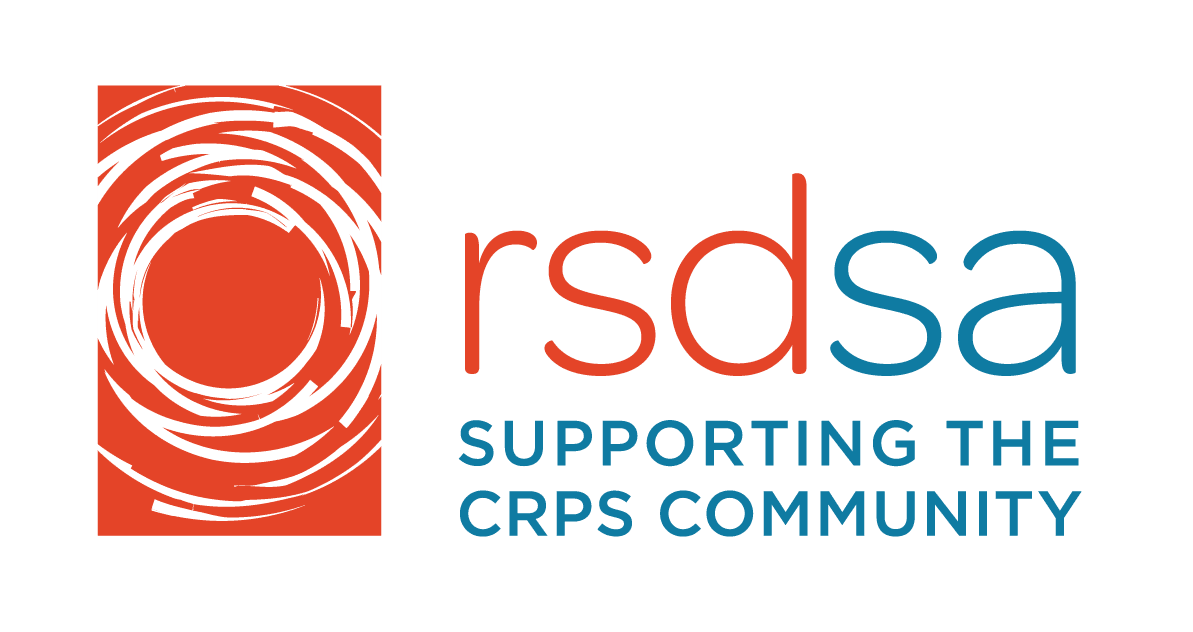
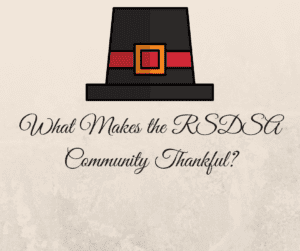 Compiled by Samantha Anderson for the RSDSA blog.
Compiled by Samantha Anderson for the RSDSA blog.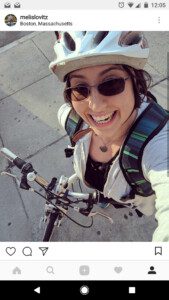 By Guest Blogger Melissa Lovitz
By Guest Blogger Melissa Lovitz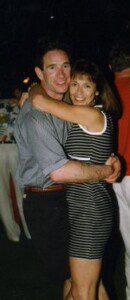 By RSDSA Board Member, Bob Lane
By RSDSA Board Member, Bob Lane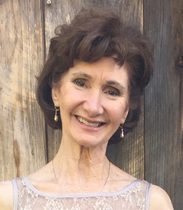 By Guest Blogger Nancy Meagher
By Guest Blogger Nancy Meagher
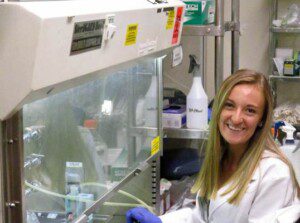 Written by Ashley Epping
Written by Ashley Epping Written by Katinka van der Merwe
Written by Katinka van der Merwe